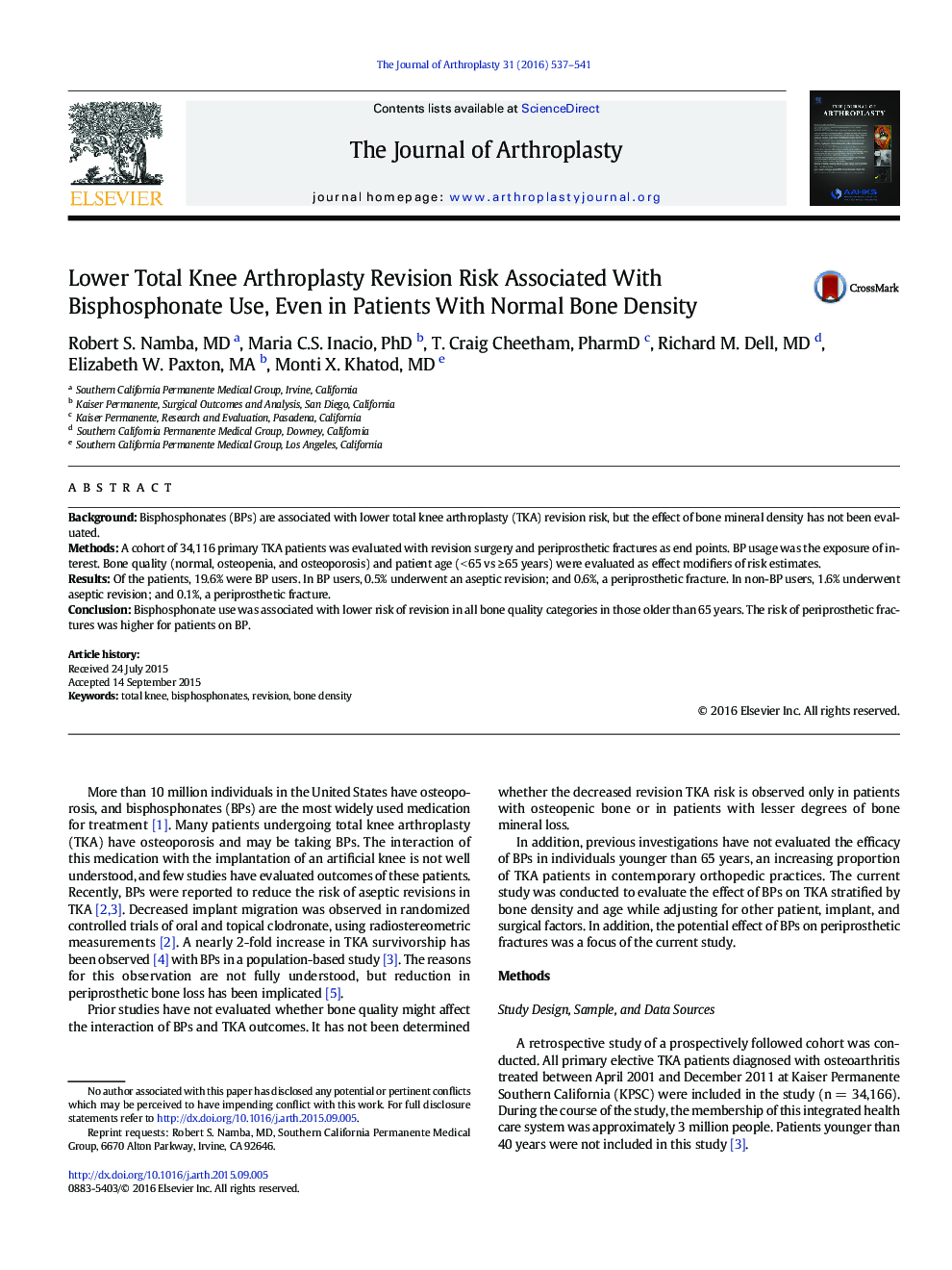| Article ID | Journal | Published Year | Pages | File Type |
|---|---|---|---|---|
| 4059948 | The Journal of Arthroplasty | 2016 | 5 Pages |
BackgroundBisphosphonates (BPs) are associated with lower total knee arthroplasty (TKA) revision risk, but the effect of bone mineral density has not been evaluated.MethodsA cohort of 34,116 primary TKA patients was evaluated with revision surgery and periprosthetic fractures as end points. BP usage was the exposure of interest. Bone quality (normal, osteopenia, and osteoporosis) and patient age (< 65 vs ≥ 65 years) were evaluated as effect modifiers of risk estimates.ResultsOf the patients, 19.6% were BP users. In BP users, 0.5% underwent an aseptic revision; and 0.6%, a periprosthetic fracture. In non-BP users, 1.6% underwent aseptic revision; and 0.1%, a periprosthetic fracture.ConclusionBisphosphonate use was associated with lower risk of revision in all bone quality categories in those older than 65 years. The risk of periprosthetic fractures was higher for patients on BP.
